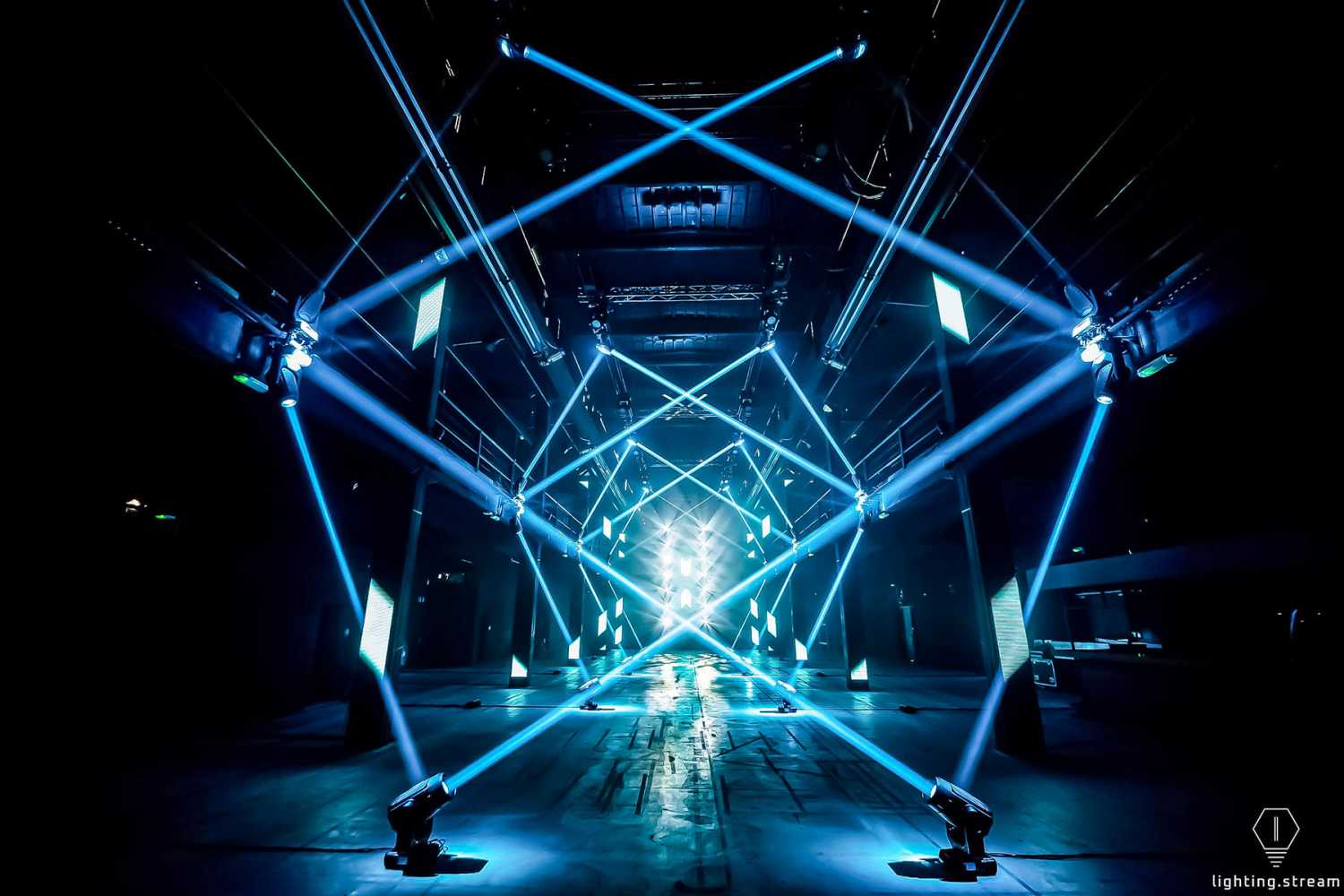Robe lights Lux Partum art installation
- Details

This comprised Lars Musasch, Andreas Schindler, and Matthias Schöffmann together with DJ and music producer Paul van Dyk who composed a special soundtrack and played a three-hour live concert during the first weekend.
The work utilised 54 x Robe moving lights including MegaPointes, Pointes plus Tetra2 moving LED battens which were installed in the venue with LED screen elements, and all rigged, programmed and set up to be accessed by the public via the https://lighting.stream website and ‘played’ in real-time.
By the end of the 10-day run, over 43,000 visitors from 94 countries had engaged with the art work in 6.355 registered sessions utilising lighting.stream’s bespoke user interface technology. They chose over 200.000 different combinations of lighting / video which were viewed over 528,404 minutes of activity.
Visitors could select the colour and patterns of the lighting and video effects as they played out to the music track, changing at pre-determined points to keep the groove flowing harmoniously.
Running over two weekends and the intervening week, Paul van Dyk played a three-hour live set at the Motorwerk on the first Sunday night, enabling his massive fanbase to tune into the stream and be part of making the concert visuals look spectacular – each visitor to the site having a three-minute slot.
Matthias is based in Austria and works with Chris extensively on programming light shows, and he developed and energised all the web streaming geekery; Lars helped source the venue via his extensive network of connections and called on rental company TLT Event to provide the kit as well as supplying some himself, including the LED screens and the console. Video expert Andreas Schindler designed and produced all the generative visuals.
The venue’s main hall stretches over 90m long, has a good height and is full of iron columns and RSJ beam-work, so Chris wanted to accentuate the scale and architecture of the space and integrate it into the design.
“It immediately lent itself to a distinctive geometric lighting design,” explains Chris, “and to having beams and LED battens as the lighting instruments.” He adds that it was also relatively easy to rig the lighting in the space utilising the house rigging facilities plus structural elements like the balcony rails and RSJs.
Lighting equipment – including some of the 20 x Pointes, 20 x MegaPointes and 14 x Tetra2 bars – were supplied and rigged by TLT Event. Additional Robes were supplied directly from Robe, and the final two MegaPointes needed came from Berlin’s Friedrichstadt Palast Theatre (closed right now but Chris has designed their current show, and the fixtures were from the house rig).
Two rows of MegaPointes deployed on the floor were mirrored by two rows in the ceiling all at exactly the same distance away from each other. Rigged along the middle section – just beneath the balcony that traverses the entire length of the hall – were two rows of Pointes immediately above / below one another … with exactly 4 metres between the top and the bottom MegaPointes and the Pointes.
Seven Tetra2s were positioned vertically each side at the back of the room, with one column of 10mm LED screen in the middle to produce a blisteringly bright and dynamic end feature that helped create an illusion elongating the physical space which was especially effective onscreen.
Lighting was all programmed on a grandMA2 console and the generative visuals were created by Andreas using Notch running via a disguise media server which mapped it to the screens, playing out via Resolume.
Chris concludes, “This has been a great project, however, it’s by no means a replacement for experiencing art and shows in real spaces and in relation to other people. Culture must continue, and people most definitely need haptic experiences in three-dimensional environments.”
(Jim Evans)
















